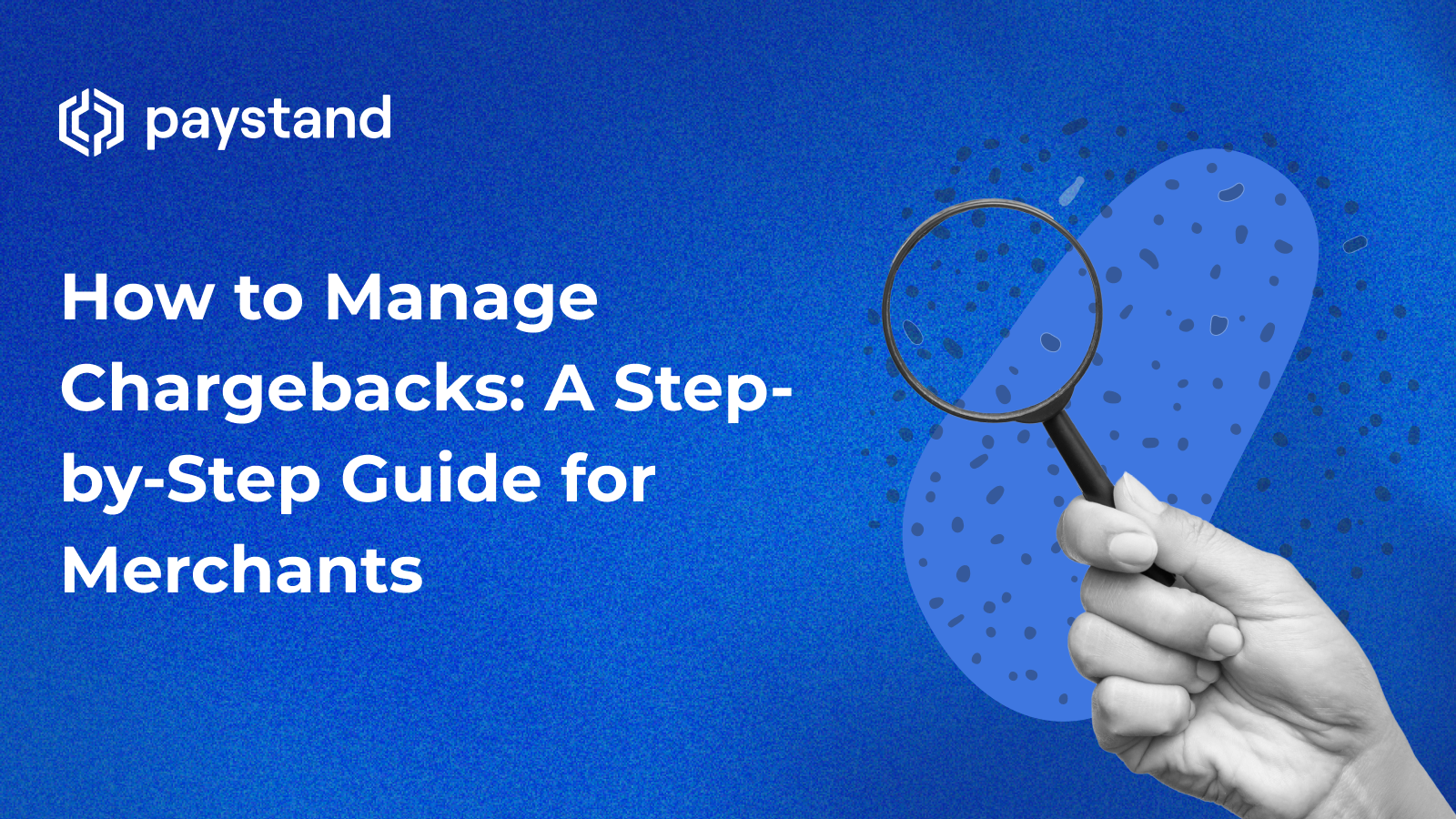How to Manage Chargebacks: A Step-by-Step Guide for Merchants

Table of Contents
- What Is a Chargeback?
- What Are Chargeback Fees?
- Step 1: Understand the Chargeback
- Step 2: Determine Your Response
- Step 3: Dispute the Chargeback
Key Takeaways
- Chargebacks are disputes initiated by cardholders and handled through the card network and banks.
- They fall into three main categories: friendly fraud, criminal fraud, and merchant error.
- Merchants must act quickly to understand the reason code and submit appropriate documentation.
- The right payment partner can help you win disputes and reduce the risk of future chargebacks.
Chargebacks can be a frustrating and costly part of doing business, whether due to stolen cards, customer disputes, or processing errors. But understanding how to manage chargebacks can help you minimize losses, recover funds, and improve your operations.
What Is a Chargeback?
A chargeback occurs when a customer disputes a charge with their issuing bank. The bank initiates a reversal, temporarily pulling the funds from the merchant while the dispute is investigated.
Chargebacks can result from:
- Unauthorized transactions (fraud)
- Customer dissatisfaction
- Clerical or fulfillment errors
Knowing how to manage chargebacks starts with understanding what causes them and how the process works.
What Are Chargeback Fees?
In addition to losing the revenue from a disputed transaction, merchants are often hit with chargeback fees — non-refundable penalties imposed by the payment processor or acquiring bank. These fees are meant to cover the administrative costs of managing the chargeback process and typically range from $20 to $100 per dispute.
For high-volume businesses or those experiencing frequent disputes, chargeback fees can quickly add up and significantly impact profit margins.
Beyond the financial cost, too many chargebacks and chargeback fees can also threaten your ability to process payments. Excessive disputes can lead to higher processing fees, payment holds, or even termination of your merchant account.
Step 1: Understand the Chargeback
Each chargeback comes with a reason code provided by the card network (Visa, Mastercard, etc.). These codes identify why the customer is disputing the charge. While there are over 150 codes across major card networks, they typically fall into three categories:
Friendly Fraud
A legitimate customer files a dispute for a purchase they don’t recognize or regret. Often, they forget about the transaction, or someone else used their card. Friendly fraud accounts for 70% of chargebacks.
Criminal Fraud
Involves unauthorized transactions from stolen cards or identity theft. This type makes up less than 10% of all chargebacks.
Merchant Error
Errors made by the merchant — duplicate charges, wrong items, or poor service. These account for roughly 30% of chargebacks.
Tip: Start by identifying the chargeback reason code so you can craft the correct response strategy.
Step 2: Determine Your Response
Once you understand the reason, choose whether to accept or contest the chargeback. In some cases, especially if the error is on your end, it may be best to accept the dispute.
If you decide to fight it, gather supporting evidence:
- Invoices and order confirmations
- Delivery or pickup records
- Communication logs
- Refund policy documentation
Timing matters. Merchants only have a limited window to respond. Missing the deadline means automatic loss of the dispute.
Step 3: Dispute the Chargeback
If you move forward with disputing the chargeback:
- Submit your evidence through your acquiring bank or payment processor.
- Expect the process to take several weeks.
- Be ready for follow-up requests for documentation.
Most banks favor the customer, so being detailed and proactive is key to winning.
How Paystand Helps You Manage Chargebacks
At Paystand, we believe in proactive chargeback management. Here’s how we support your business:
Enterprise-grade Security:
Our blockchain-certified network adds a layer of protection to every transaction.
Hands-On Support:
Our customer success team works directly with you to prepare evidence and dispute claims.
B2B Payment Method Flexibility:
We support multiple rails beyond credit cards, including eCheck and ACH, reducing chargeback risks.
Transparency & Tracking:
With a built-in billing portal, automatic receipts, and full audit trails, we make it easier to resolve disputes and keep customers informed.
Take Back Control of Your Payments
Chargebacks may be unavoidable, but how you manage them makes all the difference. With Paystand, you’ll have the tools and support to respond effectively, protect your revenue, and reduce future disputes.
Learn more about how we make chargeback management easier and more efficient through our payment portal.






%20(1)%20(1).jpg?width=100&height=100&name=IMG_3752%20(1)%20(1)%20(1).jpg)